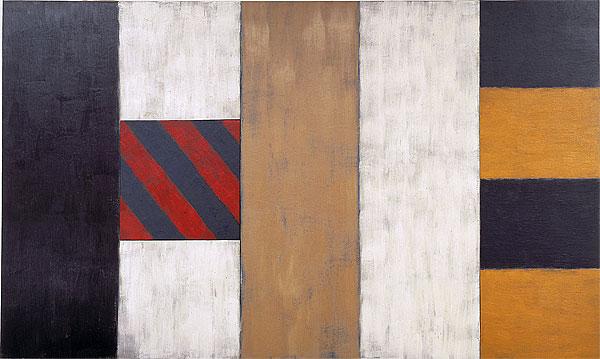Sean Scully
I first met the painter Sean Scully in 1971 at the Walker Art Gallery in Liverpool where we both had pieces in the John Moores Exhibition, and subsequently met him a few times in London until he moved to New York in about 1975. A career move that has seen him become a world class artist with studios around the world and work in just about every major collection. Sean Scully was born in Dublin on 30 June 1945, a painter and printmaker of abstracts who has twice been named a Turner Prize nominee.
Scully was nominated for the Turner Prize in 1989 and 1993. He has exhibited widely in Europe and the United States, and is represented in the permanent collections of a number of museums and public galleries, including the Metropolitan Museum of Art, the Museum of Modern Art, and the Guggenheim Museum in New York City, the National Gallery of Art and the Smithsonian American Art Museum in Washington, D.C., The Art Institute of Chicago, the Fine Arts Museum of San Francisco, the National Gallery of Australia, the Tate Gallery, London, the Irish Museum of Modern Art in Dublin, and many other private and public collections worldwide. In 2006 Scully donated eight of his paintings to the Hugh Lane Gallery in Dublin, which opened an extension that year with a room dedicated to Scully's works. In 2005 to 2006, Scully's Wall of Light series was displayed at museums across the United States. The work originated in a trip Scully took to Mexico in 1983.

Scully's paintings are often made up of a number of panels and are abstract. Scully paints in oils, sometimes laying the paint on quite thickly to create textured surfaces. Today he is one of the most widely acclaimed and exhibited painters in the world. After a brief initial period of hard-edge painting Scully abandoned the masking tape while retaining his characteristic motif of the stripe.
For over a quarter of a century since he has developed and refined his own instantly recognisable style of heroic geometric abstraction. His paintings typically involve tough architectural constructions of abutting walls and panels of densely and lushly painted stripes.
Though he frequently works on a monumental scale, even on a more modest scale his paintings and works on paper exude a romantic gravity of an unmistakably urban rather than rural tenor. In recent years he has augmented his trademark stripes by also deploying a mode of compositional patterning more reminiscent of a checkerboard. He has stated that this style represents the way in which Ireland has moved towards a more chequered society. He stated in 2006, "I remember growing up in Ireland and everything being chequered, even the fields and the people."

















No comments:
Post a Comment
Note: only a member of this blog may post a comment.